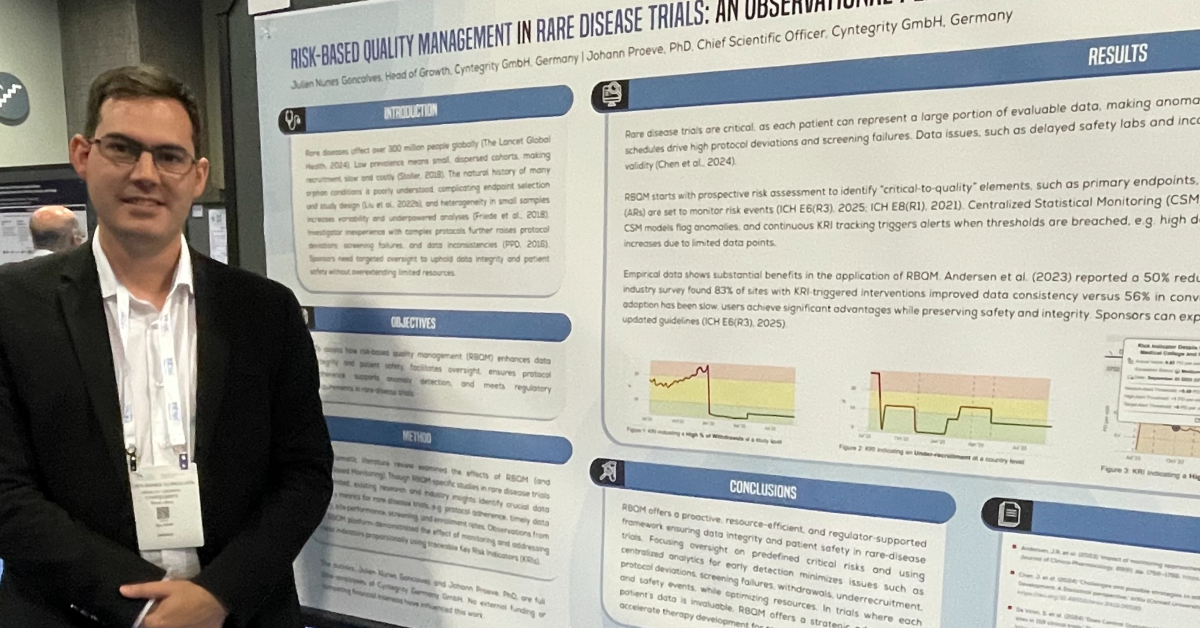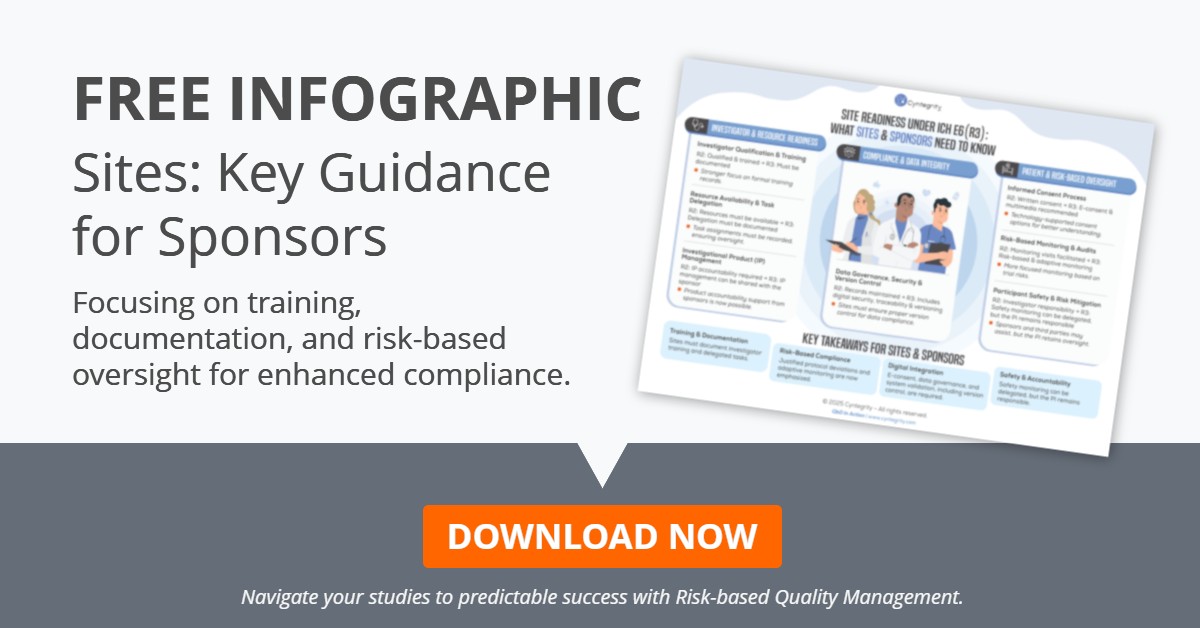Introduction
In the clinical research industry, the terms “Risk-Based Quality Management” (RBQM) and “Quality Risk Management” (QRM) are often used interchangeably. While both approaches are designed to manage risks that could impact the quality of a clinical trial, there are essential differences between the two.
Risk-Based Quality Management (RBQM)
RBQM provides a framework for managing the overall quality of a clinical trial by identifying critical processes and data points and focusing resources on those areas. The purpose of RBQM is to ensure that risks are identified and managed proactively and systematically throughout the clinical trial process.
The ICH E6(R2) guideline provides a framework for implementing RBQM in clinical trials. The guideline emphasizes the importance of risk-based approaches to monitoring and data collection, as well as the need for centralized monitoring and risk assessment. It also provides guidance on the use of key risk indicators (KRIs) to monitor trial quality. The ICH E8(R1) guideline provides further guidance on the use of RBQM in the design, planning, conduct, and reporting of clinical trials. The guideline emphasizes the need for risk-based trial design, as well as the importance of ongoing risk assessment and management throughout the trial.
Quality Risk Management (QRM)
QRM, on the other hand, is a systematic process of evaluating, assessing, controlling, and communicating risks that could affect the quality of a clinical trial. The purpose of QRM is to identify potential risks to quality and implement appropriate measures to mitigate those risks. QRM is a vital component of a comprehensive quality management system and is essential for ensuring patient safety and regulatory compliance.
The ICH Q9 guideline is a valuable resource for implementing QRM within clinical research. It emphasizes the importance of risk-based decision-making and offers a set of principles and tools to ensure effective QRM processes. This guideline recognizes the importance of continuous improvement, stressing the need for ongoing evaluation and optimization of risk management strategies. Documentation and communication are also essential components of successful QRM implementation, as they enable clear and transparent communication across stakeholders and facilitate effective decision-making. Overall, the ICH Q9 guideline provides a comprehensive framework that supports the development of robust and effective risk management practices in the pharmaceutical industry.
Differences Between RBQM and QRM
| Risk-based Quality Management (RBQM) | Quality Risk Management (QRM) | |
|---|---|---|
| Purpose | Manage overall quality of clinical trial | Identify and mitigate specific risks to quality |
| Focus | Critical processes and data points | All processes and potential risks |
| Implementation | Throughout the entire clinical trial process | Specific risk management processes |
| Regulatory Guidance | ICH E6(R2) and ICH E8(R1) | ICH Q9 |
| Key Tools | Centralized monitoring and KRIs | Risk assessment and control tools |
| Key Principles | Proactive and systematic risk management | Risk-based decision-making and continuous improvement |
| Documentation | Trial monitoring and risk assessment plans | Risk management plans and ongoing evaluation |
| Communication | Clear and transparent communication with stakeholders | Clear and transparent communication with stakeholders |
Note: This table is not exhaustive and is only intended to provide a summary of the key differences between RBQM and QRM.
Complementary Nature of RBQM and QRM
RBQM and QRM are complementary approaches to managing risk in clinical trials. While RBQM focuses on the overall management of trial quality, QRM provides a framework for identifying and mitigating specific risks that could impact trial quality. Implementing both approaches is crucial for ensuring patient safety, data integrity, and regulatory compliance.
In fact, QRM is a fundamental aspect of RBQM. RBQM cannot be effectively implemented without first conducting a comprehensive QRM assessment to identify potential risks and develop appropriate risk management strategies.
- RBQM and QRM are two complementary approaches to managing risk in clinical trials.
- RBQM provides a framework for managing the overall quality of a clinical trial by identifying critical processes and data points and focusing resources on those areas.
- QRM is a systematic process of evaluating, assessing, controlling, and communicating risks that could affect the quality of a clinical trial, and is a key component of a comprehensive quality management system.
- Implementing both RBQM and QRM is crucial for ensuring patient safety, data integrity, and regulatory compliance.
- Regulatory guidelines, including ICH E6(R2), ICH E8(R1), and ICH Q9, provide a framework for the implementation of RBQM and QRM in clinical trials.
Conclusion
In conclusion, RBQM and QRM are both essential components of a comprehensive quality management system in clinical trials. While they have different focuses and methodologies, they are complementary approaches to managing risk and ensuring trial quality. Implementing both RBQM and QRM is crucial for ensuring patient safety, data integrity, and regulatory compliance.

NEW | The Clinical Researcher’s Guide to RBQM
Discover the future of clinical research with “The Clinical Researcher’s Guide to RBQM” by Artem Andrianov, PhD, and Johann Proeve, PhD.
This comprehensive guide (160+ pages Kindle edition) explores the principles of risk-based quality management, offering invaluable insights for optimizing clinical trials. Don’t miss your chance to be at the forefront of innovation in biopharmaceutical product development.







